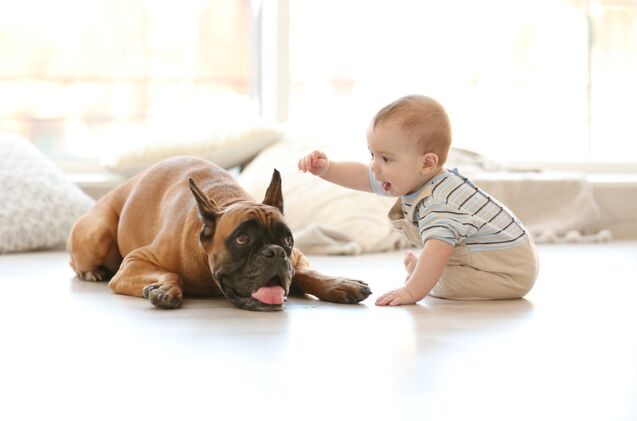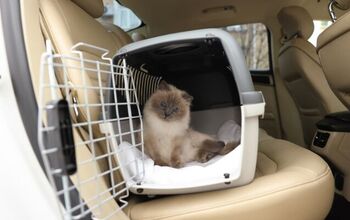Owning a Dog May Protect Your Child From Food Allergies

When it comes to the relationship between children and their pets, many conversations focus on the potential risks of allowing them to interact. But what if having a furry companion could significantly reduce their risk of developing food allergies?
Approximately 1 in 13 American children have food allergies, with 40 percent suffering from allergies to more than one type of food. This number has been on the rise, increasing by approximately 50% between 1997 and 2011. As a result, we have seen changes in our homes, classrooms, public spaces, and every other aspect of our lives. But these food allergies are more than an inconvenience. They can be life-threatening!
We have seen studies exploring the impact of pets on children, their health, and their development before. They have been found to lower blood pressure, improve relationships, and even improve their future career success. It’s also not the first time that researchers have explored the connection between pet ownership and the development of allergies in children. It’s a concept that has been analyzed and discussed for quite a while.
“Some studies show that early exposure to furred animal dander does protect against food allergies. Some show it doesn’t,” stated Dr. Carolyn Kwiat, an allergist and immunologist at Mount Sinai Hospital. The conflicting information baffled scientists and those in the health community. But a recent study published in March 2023 has shed light on the connection between owning a dog and its potential impact on childhood allergies, and the results are promising.
The study, conducted in Japan, found that exposure to a dog or cat while a child is in utero or during the first few months of their life lowered the risk of developing a food allergy by approximately 14%. It included a sample size of 66,000, making it the largest of its kind.
However, a few aspects of the study may lead some to question the accuracy of its findings. The biggest concern was that the diagnosis of food allergies in the children being observed was not confirmed with medical testing. Instead, it was based on a questionnaire completed by the participating parents.
Still, the study introduces new information, encouraging researchers and healthcare professionals to explore the potential connection further. The large sample size allowed researchers to explore not only the fundamental question of whether a connection existed but also to better understand the impact of different pet species, the timing of the child’s exposure, and how it applied to allergies associated with a variety of foods.
The research team found that exposure to indoor dogs resulted in a decreased incidence of egg, cow’s milk, and nut allergies. Meanwhile, exposure to cats reduced the incidence of egg, wheat, and soybean allergies. No statistically significant differences were found in children that lived with outdoor dogs, birds, or turtles.
Interestingly enough, those that lived with hamsters were found to experience a 93% increased incidence of nut allergies.
“The increased incidence risk of nut allergy with hamster exposure may be explained by the fact that hamsters feed on nuts,” researchers shared in the study. “In other words, we assumed that nut allergens can… sensitize infants through physical contact or house dust.”
But does the study mean that prospective parents should consider adding a pet to the family to improve their future children’s health and well-being? You may want to hold off until further research has been conducted.
“I don’t think there’s enough recommendations to adopt a pet if you’re pregnant to specifically prevent food allergies, just because the data has been so conflicting in the past,” explained Kwiat. However, she agreed it was a step in the right direction. “Early introduction, we know, helps promote tolerance and prevent allergies. So, that’s what I can say more confidently.”

Britt Kascjak is a proud pet mom, sharing her heart (and her home) with her “pack” which includes her husband John, their 2 dogs – Indiana and Lucifer – and their 2 cats – Pippen and Jinx. She has been active in the animal rescue community for over 15 years, volunteering, fostering and advocating for organizations across Canada and the US. In her free time, she enjoys traveling around the country camping, hiking, and canoeing with her pets.
More by Britt























